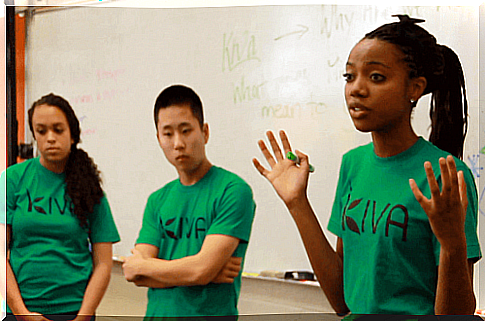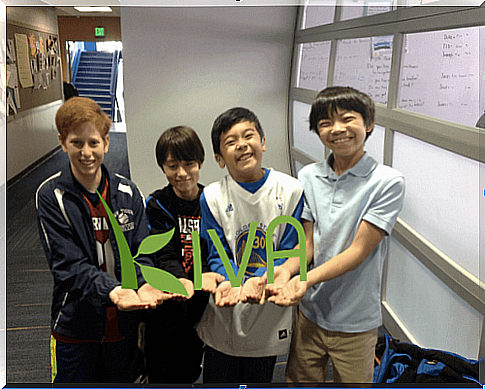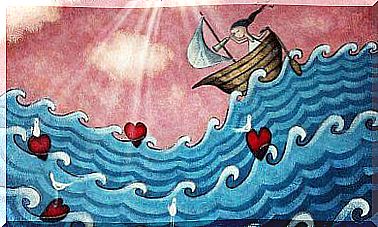The KiVa Method: A Strategy To End Bullying

Bullying is a repeated form of violence that causes damage to the victim on different levels, starting from their social relationships up to their self-esteem. The goal of bullying is to subdue through intimidation. Although it is generally associated with school settings, it can extend to all social networks and different environments. The consequences are fatal for the victims, from a physical and psychological point of view. To combat this scourge, the KiVa method was created in Finland.
In general, the protagonists of these dynamics are minors in their adolescence and, unfortunately, it is a form of violence present in many societies. It is equally true that new technologies, especially in the Western world, have made the spaces in which the victim feel safe disappear.
The most worrying aspect of this situation is the increase in cases in recent years in school centers. Worse still, some situations of school abuse are so intense and frequent that the victim sees only one way out: suicide. For this reason, some countries have started to take steps to solve the problem.
Finland: an example for the world
Experts report that bullying exceeds 70% in some schools. For this reason, they urged the educational community, pushing it to recognize this reality. On the other hand, and even more importantly, by requiring that it adopt methods of prevention where mistreatment and abuse are in the initial state.

Finland is an example for the world, the design and application of the KiVa method has led to results that bode well. This Nordic country has taken on the challenge of ending bullying in its school system. As a result of this specialized intervention, Finland has managed to reduce school abuse by 90% in recent years.
Thanks to this success, it has received multiple praises worldwide, coming to occupy the first place for quality in primary and higher education. In addition, it holds the first place for training in the Global Competitiveness Report. It is the consequence of a high level of social consciousness and the establishment of an important amount of educational resources.
Finland is currently regarded as one of the most innovative and creative countries in Europe and the world. It is also worth noting that the consequences of bullying at school not only affect the people directly involved, but also the entire educational community, extending to families.
What is the KiVa method?
The term KiVa derives from the fusion of the first syllables of the two words which in Finnish mean school bullying. The application of this method has spread to many schools and its success was not long in coming. To such an extent that educators consider it an indispensable tool for working with their students.

The KiVa project is the result of a need expressed by the government towards the educational community of the country, based on preliminary studies and worrying data on school violence. Following this petition, professionals from different areas and institutions of various kinds worked together to develop the KiVa method.
In its experimental phase, this program has achieved surprising results. Bullying decreased by 41% in the first year. In just a few years, school bullying has decreased by 80%. All this motivated the pupils to study more and achieve better results. These astonishing numbers speak for themselves, which has awakened unusual interest in educational associations worldwide.
The great success of the KiVa method consists in not focusing only on the confrontation between bully and victim. Attention was paid to the viewer, who indirectly participated in the abuse in question, reinforcing it. It is not about inducing the victim to reveal his or her feelings about the abuse, nor is it about getting the abuser to feel empathy for the victim.
Decipher the puzzle
The secret lies in acting on the students who witnessed these situations and who, in general, responded with laughter. These spectators could be prone to rejection when attending the attack. However, they ended up internalizing it as normal and fun too. Therefore, the purpose of the KiVa method is to influence viewers so that they do not participate directly in these dynamics of abuse.

In its initial phase, the program focused on educating children aged seven and over. The aim was to enable them to recognize the different ways of bullying. The method is structured on different courses, in which the various issues relating to school bullying are commented and analyzed. Empathy, respect for others and moral values are also taught.
Pedagogical resources such as video games, manuals and conversation are used. All this is reinforced by instructions given to the teachers, supervision during recreation and accompaniment during group work. A virtual forum was also created where students could report any cases of bullying, both as victims and as witnesses.
Results of the program
In each school where it is applied, the principal selects a group of three adults responsible for the course. They will make sure that the method is applied and will learn to use the tools that allow them to recognize in time and investigate all the forms of bullying that occur in the school.
This process includes dialogue with the victim, to reassure him; and with the aggressor, to sensitize him. On the other hand, they will talk to the spectators about the fact, since they are the ones who form the foundation stone of the project. Finally, we proceed to verify the facts, this in most cases leads to a positive result.

The drastic change that has taken place with the introduction of the KiVa method in Finnish schools is just one demonstration of its potential. Its use, starting from the earliest ages, produces the best results. In addition, it helps to repair cracks present in educational and family institutions.
When minors are educated not to actively or passively support violent conduct of this type, we see how a change of mentality takes place in them. Programs like this are successful thanks to people who believe it is possible to change society, so that it becomes more cohesive, just and supportive.









